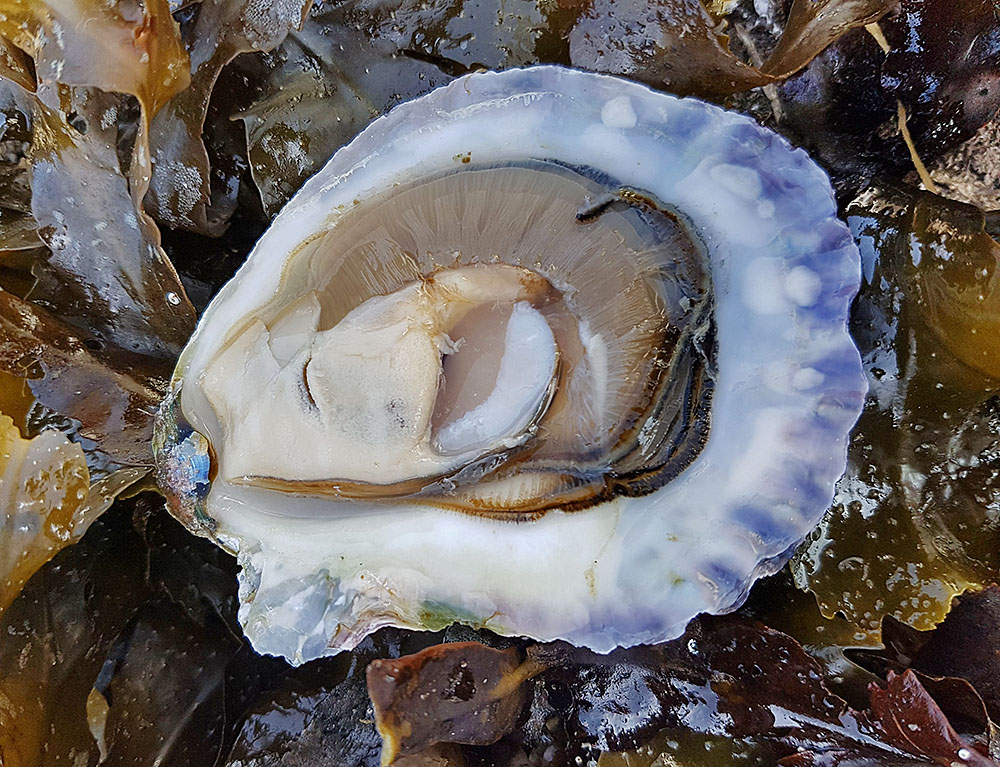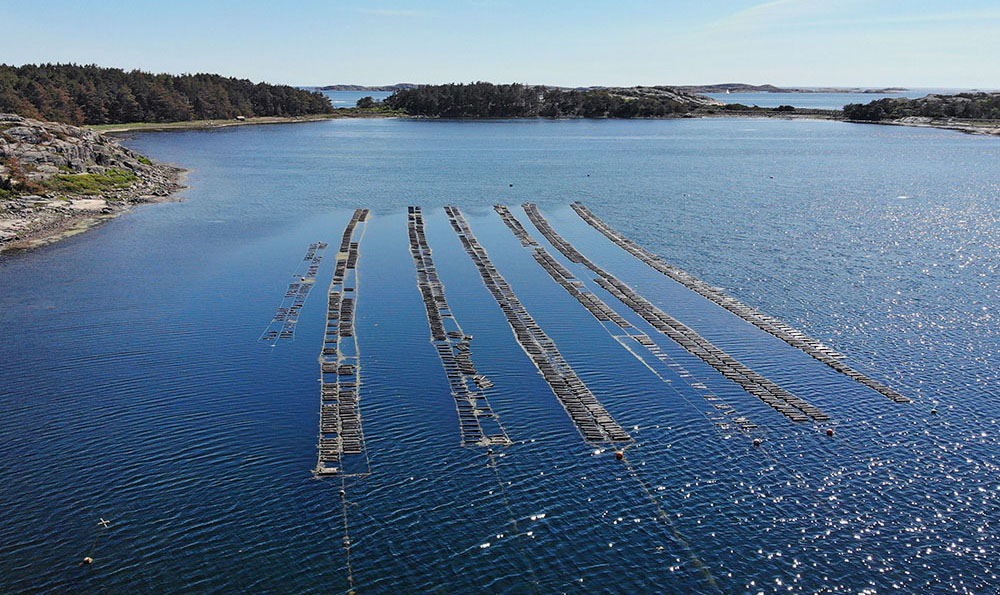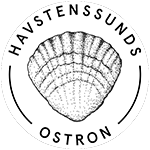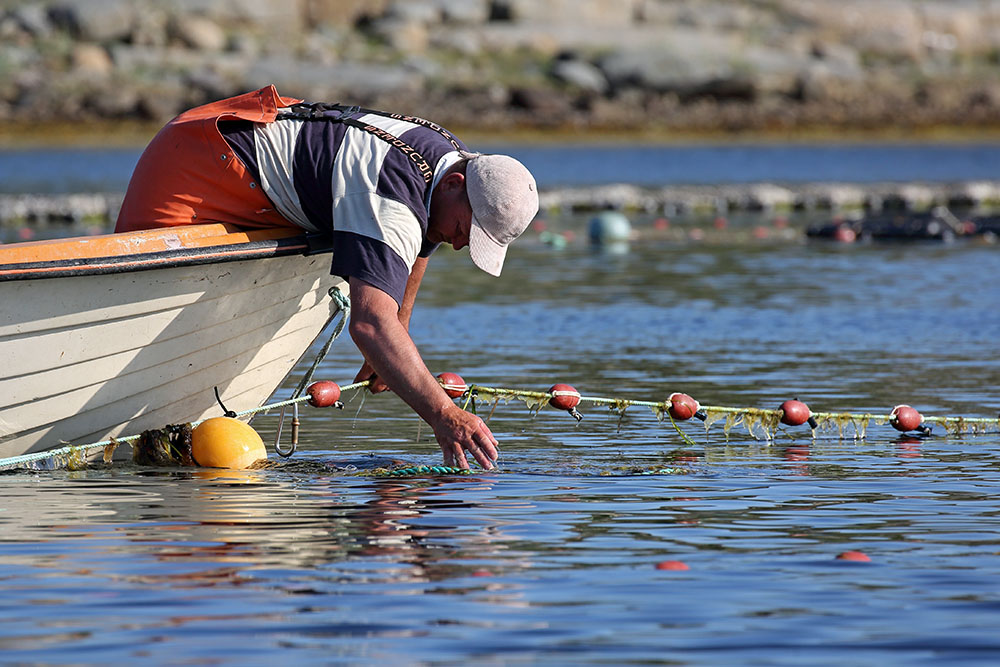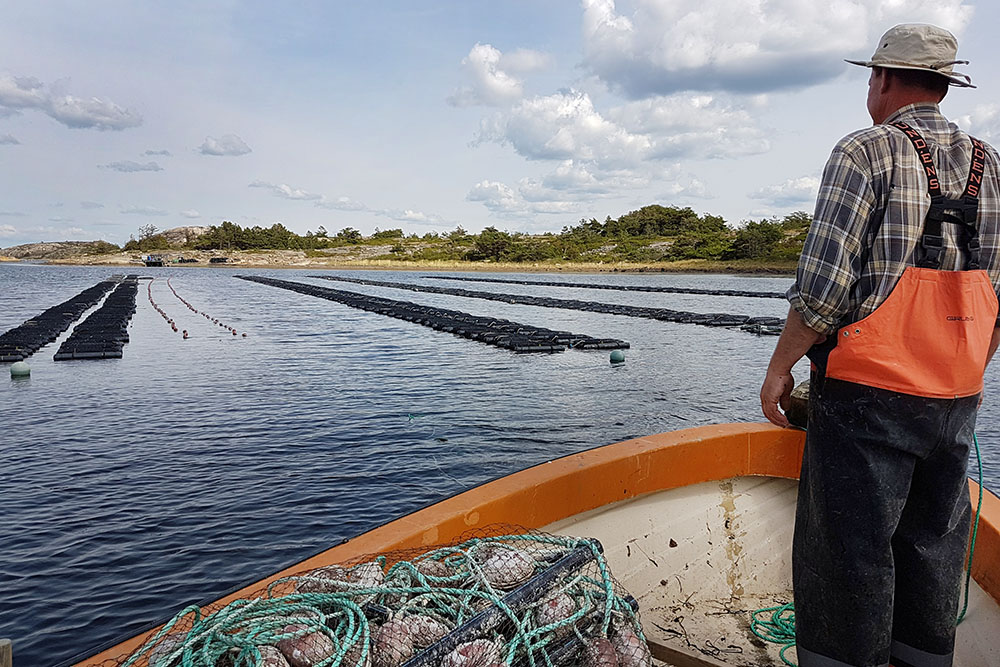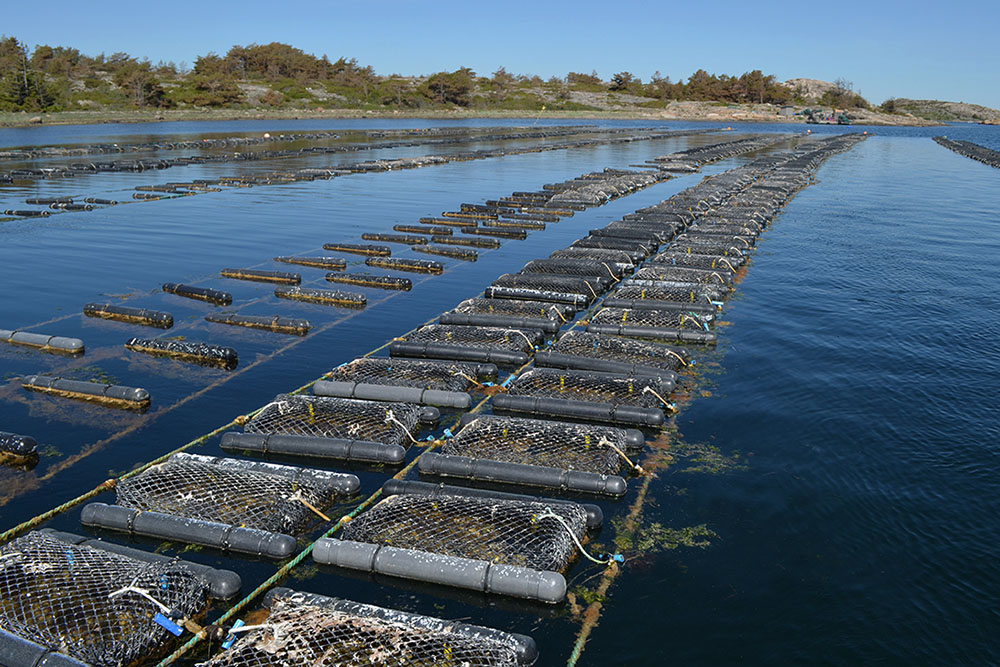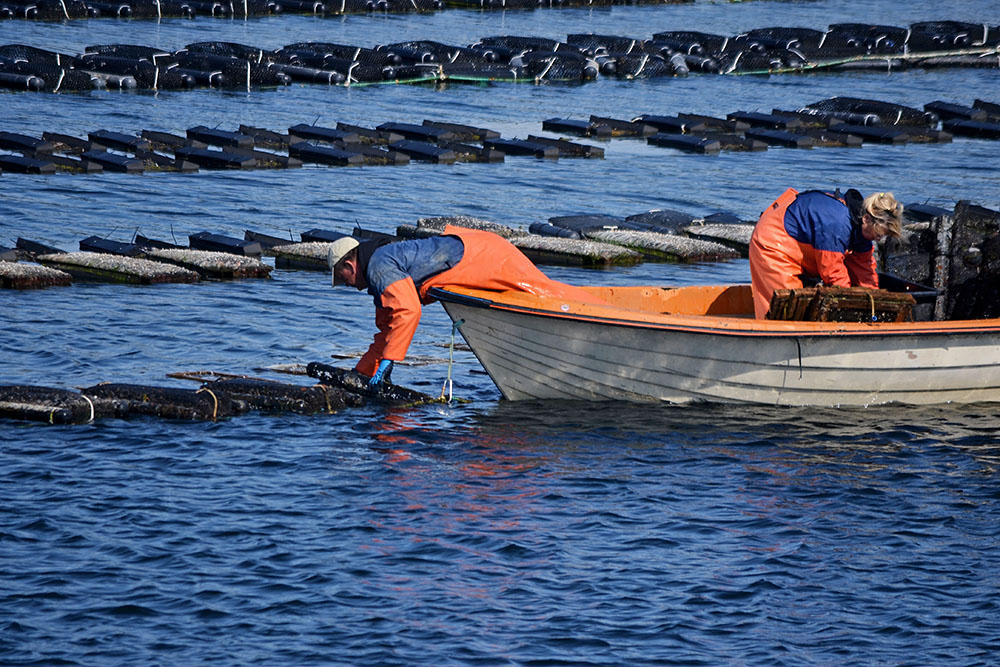OYSTER FARMING
It is almost 20 years since we started trying to grow our native species Ostrea edulis. During the journey, we have developed a technology where the entire cultivation process takes place naturally in the sea without the need to add anything such as nutrients, energy or antibiotics. We are currently the only farm using this method in Scandinavia. The cultivation takes place in specially made net bags that float in the surface. This cultivation system means that the oysters are constantly kept in motion and stay where there is most food (plankton) and fresh water. This is reflected in the fact that the oysters are well fed and has a beautiful shape that makes them well suited as cocktail oysters.
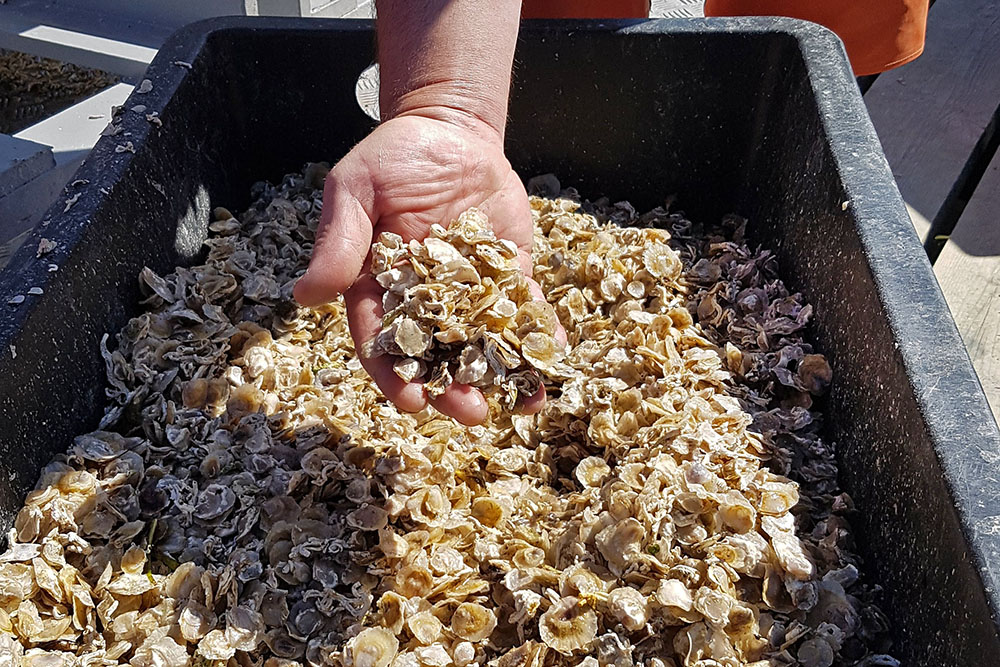
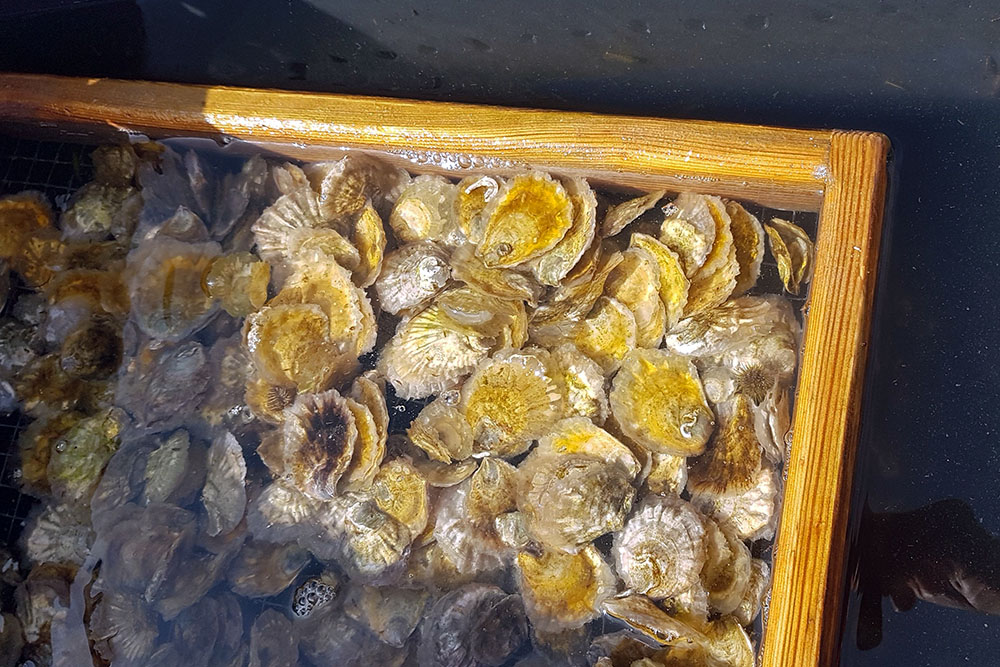
THE PROCESS
Oysters are difficult to grow in Scandinavia; it takes a long time and they require a lot of care. The cold climate with slower growth and ice during parts of the year are added challenges, as oysters cannot survive in waters below freezing. During the 19th century, attempts were made to grow oysters on the Swedish west-coast, but these operations ceased due to failure to get the oysters to reproduce regularly. The reproduction is the most important aspect of farming oysters. The process begins with collecting oyster spats that swim freely in the ocean 2-3 weeks after the oyster’s spawn. During this time the oyster spats live like plankton, drifting around looking for a suitable place to settle. The spats are careful with the choice of location and there are many criterias that must be met. After many years of experimenting, we have developed a method that is based on being in the right place with the right equipment at the right time, and getting the spats to naturally settle on specially designed collection equipment. This is the natural method of growing oysters. Many oyster farms around the world do not manage to collect the oyster spats themselves but buy oyster seeds from other growers. It is also common for oyster spats and seeds to be produced in a laboratory.
At this stage the oyster spats are only about 0.3 mm in size. After the spats have settled in a suitable place, they undergo a metamorphosis and take the shape and form of an oyster, but are still very small (about 0.5 mm). The small oyster continues to grow until it is between 8 – 15 mm, which is when we collect it and place it in a fine mesh bag. All further growth takes place inside bags until the oyster has reached a size of 75 – 120 grams, and is ready for consumption. It takes 3-5 years for the oyster to reach this size. The oysters grow at different speeds, so at regular intervals the bags are picked up so that unwanted growth, such as algae, can be removed. The oysters are also re-distributed so that they do not become too cramped in the bags. This benefits water circulation and stimulates growth.
ENVIRONMENT
Farming oysters on nature’s own terms has a very positive impact on the surrounding marine environment. Oysters act as small water treatment plants because they filter the water, live on phytoplankton and thus reduce eutrophication. An oyster can filter up to 8 litres of seawater per hour. Today, our oyster farms roughly purify 553 million cubic meters of water per year. In one of the shallow bays where we farm, a clear difference has been noticed in just a few years. In the past, the bay was covered with green algae mats and visibility was poor. Now the water is clear, small fish are swimming around, and eelgrass is growing in the bay again. Several studies have shown that oyster farms have the capacity to dramatically lower nitrogen levels in shallow bays and inlets.
Our cultivation technology with floating bags means that we can farm in very shallow water (down to 30 cm) and even in areas where hypoxic “dead zones” prevails. This means oyster farms present a huge opportunity to restore and re-create a favourable environment for marine life in shallow bays. One of our goals is that our farms can be used in this type of ecological restoration work in the near future. This is already happening abroad, for example in the USA.
Oyster farming is a new industry for Sweden and therefore we have been extra careful to ensure that our farming methods are ecologically sustainable and do not have negative impacts on the environment. Our goal is to preserve and protect our native species Ostrea edulis, especially important now given that the invasive species Crassostrea gigas is spreading and rapidly takes over native oyster banks.
In consultation with other aquaculture practitioners, we started an industry council in 2020; Swedish Aquaculture and Seafood. Through the industry council, we get a common voice to spread knowledge and address issues facing the industry.
